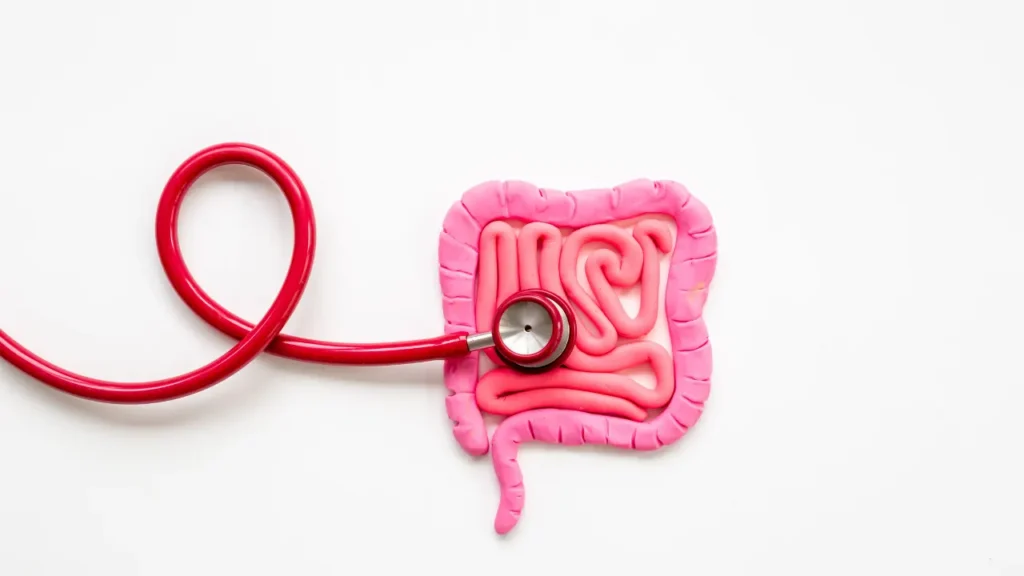Xanthoparmelia is a genus of lichenized fungi in the parmeliaceae family. Lichens are unique symbiotic creatures that are created through the mutualistic interaction of a fungus and photosynthetic ingredients, usually an alga or cyanobacterium. Xanthoparmelia species can be found in many places worldwide, but they are most common in dry and semiarid climates. Since ancient times, these lichens have been utilized in traditional medical practices due to their purported antibacterial, antioxidant, and anti-inflammatory characteristics. The nature of xanthoparmelia, its health advantages, ideal dosages, possible interactions, side effects, and usage recommendations are all covered in this article.
You May Also Like:
Enhance Mental Agility: 3 Big Benefits of Omega-3s for Cognitive Function
Nordic Naturals Omega-3 Phospholipids: Evaluation of a Leading Brain Health Product
Xanthoparmelia: Benefits, Dosage, Side Effects, Drug Interactions, And Other Important Information is an original (NootropicsPlanet) article.
Nature of Xanthoparmelia
Over 800 species make up the xanthoparmelia genus, with xanthoparmelia scabrosa and xanthoparmelia conspersa receiving the greatest attention in terms of research on their potential therapeutic uses. The thallus (vegetative body) of lichens typically has a yellow-green or grayish-green color and has a foliose or crustose morphology. Depsides, depsidones, dibenzofurans, and usnic acid are the main bio-active substances found in xanthoparmelia, and they support the lichen’s many pharmacological properties.
Health Benefits of Xanthoparmelia
The bio-active chemicals in xanthoparmelia are principally responsible for the plant’s therapeutic effects. Xanthoparmelia has a number of important health-enhancing properties, including:
1. Bioactive Chemicals: The chemicals in xanthoparmelia, especially depsides and depsidones, have strong antioxidant effects. These substances can combat reactive oxygen species (ROS) and stop oxidation-related harm to biological components like lipids, proteins, and DNA. Xanthoparmelia can lessen the risk of chronic conditions like cancer, cardiovascular disease, and neurological diseases that are linked to oxidative damage by lowering oxidative stress.
2. Anti-inflammatory Properties: According to studies, the bio-active substances in xanthoparmelia, including as dibenzofurans and usnic acid, have been shown to have anti-inflammatory properties. These substances can reduce the synthesis of pro-inflammatory mediators including nuclear factor-kappa B (NF-B) and cyclooxygenase-2 (COX-2), which reduces inflammation and related discomfort.
3. Antibacterial Properties: Xanthoparmelia extracts have shown antibacterial efficacy against different bacterial strains, such as staphylococcus aureus, escherichia coli, and pseudomonas aeruginosa. Usnic acid, which can damage bacterial cell walls and prevent bacterial protein production, is principally responsible for the lichen’s antibacterial properties.
4. Aphrodisiac Properties: Xanthoparmelia scabrosa has historically been used as an aphrodisiac. Pyrazine, a substance found in the lichen, can improve erectile function by boosting the synthesis of nitric oxide (NO) and encouraging vasodilation in penile blood vessels. To establish these effects and the safety and effectiveness of xanthoparmelia as an aphrodisiac, more research is required.

Chemistry of Xanthoparmelia
Depsides, depsidones, dibenzofurans, and usnic acid are the four main families of the bio-active substances identified in xanthoparmelia. The numerous health advantages of the lichen are caused by these secondary metabolites.
1. Depsides and Depsidones: These chemically distinct classes of substances are distinguished from one another by phenolic acid esters, with depsidones having an extra cyclic structure. Atranorin, salazinic acid, and norstictic acid are a few examples of depsides and depsidones found in xanthoparmelia. By removing free radicals from the environment and lowering oxidative stress, these substances demonstrate antioxidant abilities.
2. Dibenzofurans: A furan ring and two benzene rings are fused to form these aromatic heterocyclic compounds. By preventing the formation of pro-inflammatory mediators like COX-2 and NF-B, dibenzofurans like olivetoric acid and physodic acid have been shown to have anti-inflammatory properties in xanthoparmelia.
3. Usnic Acid: Xanthoparmelia and other lichen species frequently contain this dibenzofuran derivative. Usnic acid disrupts bacterial cell walls and prevents protein synthesis displaying strong antibacterial properties.
Physiological Properties of Xanthoparmelia
The bio-active substances in xanthoparmelia promote health through a number of physiological pathways, including:
1. Antioxidant Activity: By scavenging free radicals and chelating metal ions, the depsides and depsidones in xanthoparmelia lessen oxidative stress. This procedure reduces cellular damage and lowers the risk of chronic diseases linked to oxidative stress by preventing the oxidation of cellular components like lipids, proteins, and DNA.
2. Anti-inflammatory Properties: Xanthoparmelia contains dibenzofurans that prevent the synthesis of pro-inflammatory mediators including COX-2 and NF-B. Xanthoparmelia lessens inflammation and the pain it causes by inhibiting these mediators. For those with chronic inflammatory diseases like arthritis or inflammatory bowel disease, this may be of some benefit.
3. Antibacterial Activity: A dibenzofuran derivative called usnic acid, which is present in xanthoparmelia, works to impede bacterial protein synthesis and damage bacterial cell walls. By suppressing bacterial growth, this activity can aid in the fight against various bacterial infections.
4. Aphrodisiac Properties: Xanthoparmelia scabrosa includes pyrazine, which can improve erectile function by boosting the synthesis of nitric oxide (NO) in the penile blood vessels. An erection is facilitated by the vasodilator nitric oxide, which also increases blood flow. Further research is necessary to understand the precise molecular pathways underlying pyrazine’s effect.


Optimal Dosage of Xanthoparmelia
There is no standard dosage for xanthoparmelia supplementation due to the paucity of clinical studies on the herb. Depending on the precise health advantages desired, the bio-active chemicals of interest, and individual characteristics like your age, weight, and general health state, the ideal dosage may change. Some commercial xanthoparmelia supplements advise a daily intake of 100–200 mg of standardized extract as a general rule of thumb. However, considering the potential negative effects and interactions linked to xanthoparmelia, it is imperative to speak with a healthcare provider before beginning any supplementation plan.
Side Effects of Xanthoparmelia
Due to the small number of clinical investigations, the safety profile of xanthoparmelia supplementation is not well-known. There have been some reports of gastrointestinal side effects, such as nausea, pains in the stomach, and diarrhea. Additionally, the bio-active ingredients of the lichen, particularly usnic acid, can be hepa-totoxic at large doses and cause liver damage.
Additionally, xanthoparmelia scabrosa, a plant that has been used as an aphrodisiac, might result in side effects like headaches, dizziness, and flushing that are also connected to erectile dysfunction drugs. It is essential to use xanthoparmelia supplements with caution, especially if the safety and caliber of the particular product have not been independently validated.


Potential Substance Interactions with Xanthoparmelia
Due in large part to the scant clinical research, the potential interactions between xanthoparmelia and other substances are not well understood. However, the following interactions could occur:
1. Anticoagulants and Anti-platelet Drugs: Combining the anti-inflammatory effects of xanthoparmelia with anticoagulants or anti-platelet drugs like warfarin, aspirin, or clopidogrel can increase the risk of bleeding.
2. Antibiotics: Xanthoparmelia’s antibacterial properties can interact with antibiotics, thereby affecting how effective they are. Before combining xanthoparmelia supplements with antibiotic therapy, a medical expert must be consulted.
3. Drugs used to Treat Erectile Dysfunction: Xanthoparmelia scabrosa’s aphrodisiac effects can interact with drugs used to treat erectile dysfunction, such as sildenafil (Viagra), tadalafil (Cialis), or vardenafil (Levitra), possibly producing additive vasodilatory effects and raising the risk of negative effects.
Best Responsible Uses of Xanthoparmelia
Consider the following suggestions to ensure the proper usage of xanthoparmelia as a dietary supplement:
1. Before beginning any supplementation, speak with a medical expert, especially if you have pre-existing problems or are using drugs that could interfere with xanthoparmelia.
2. Pick standardized, high-quality xanthoparmelia supplements from reliable producers. Select goods that have undergone independent testing for potency, purity, and quality.
3. Begin with a low dose and gradually raise it as necessary, keeping a watchful eye out for any negative reactions or side effects.
4. Inform your healthcare provider as soon as you experience any side effects or negative reactions.
Xanthoparmelia:
Conclusion
The numerous bio-active chemicals in xanthoparmelia and their physiological properties are ultimately responsible for the plant’s health advantages. To understand these systems completely and their potential therapeutic uses, more study is necessary. Be sure to talk to your doctor before beginning an Xanthoparmelia supplement.


References:
- Xanthoparmelia scabrosa extract promotes neuronal differentiation and neurite outgrowth in PC12 cells. Retrieved from: https://www.ncbi.nlm.nih.gov/pmc/articles/PMC5852699/
- Evaluation of the aphrodisiac activity of Xanthoparmelia scabrosa in a rat model. Retrieved from: https://pubmed.ncbi.nlm.nih.gov/11267629/
- https://www.rxlist.com/supplements/xanthoparmelia.htm
Important Note: The information contained in this article is for general informational purposes only, and should not be construed as health or medical advice, nor is it intended to diagnose, prevent, treat, or cure any disease or health condition. Before embarking on any diet, fitness regimen, or program of nutritional supplementation, it is advisable to consult your healthcare professional in order to determine its safety and probable efficacy in terms of your individual state of health.
Regarding Nutritional Supplements Or Other Non-Prescription Health Products: If any nutritional supplements or other non-prescription health products are mentioned in the foregoing article, any claims or statements made about them have not been evaluated by the U.S. Food and Drug Administration, and such nutritional supplements or other health products are not intended to diagnose, treat, cure, or prevent any disease.
